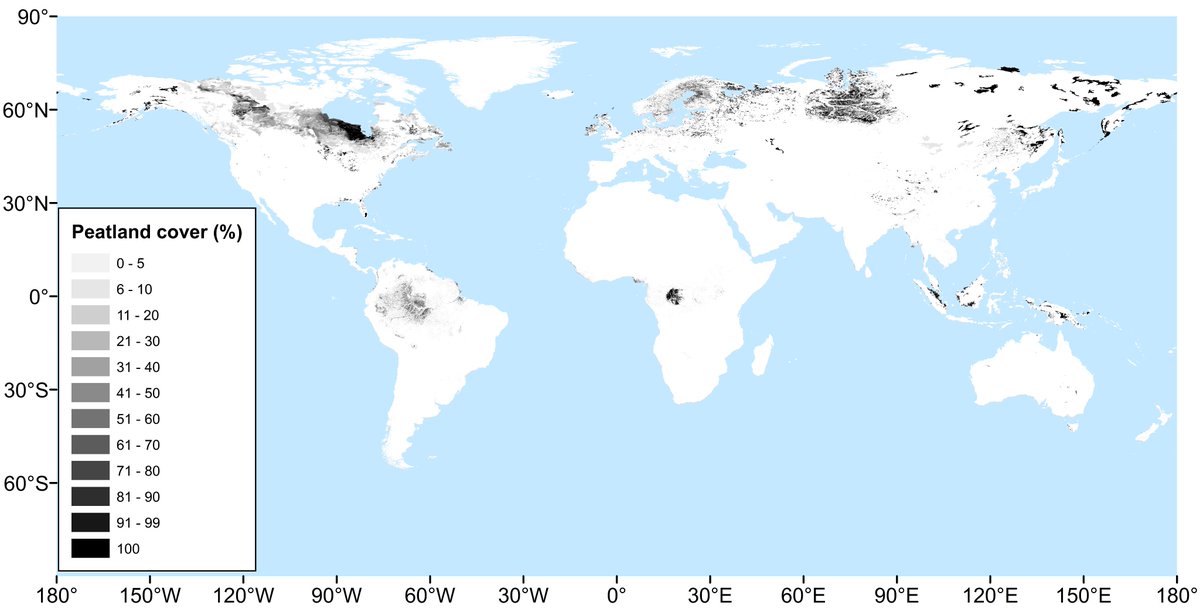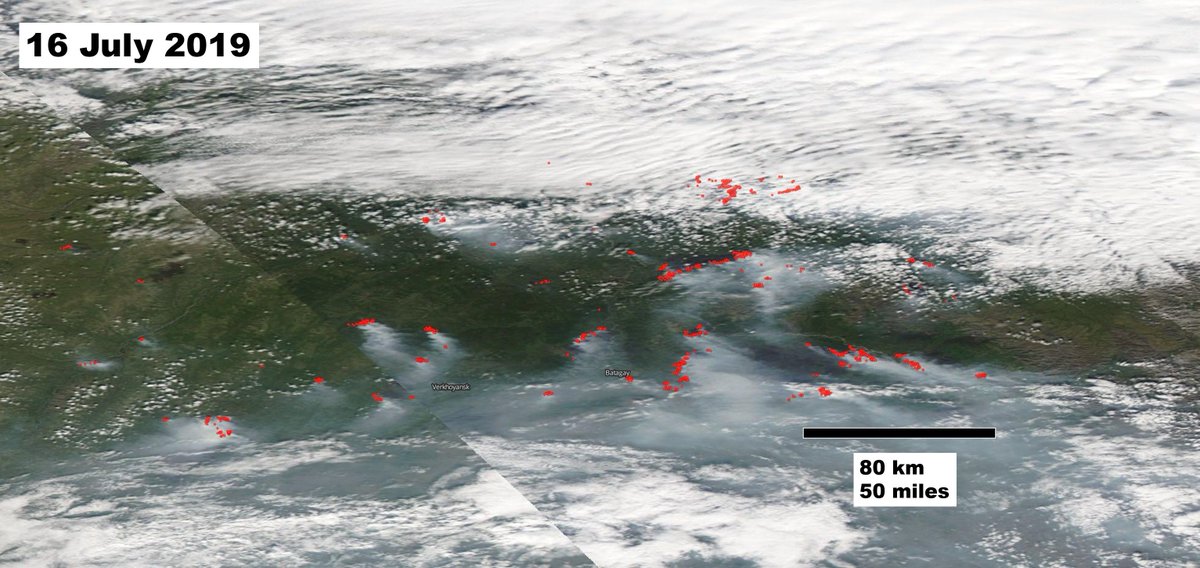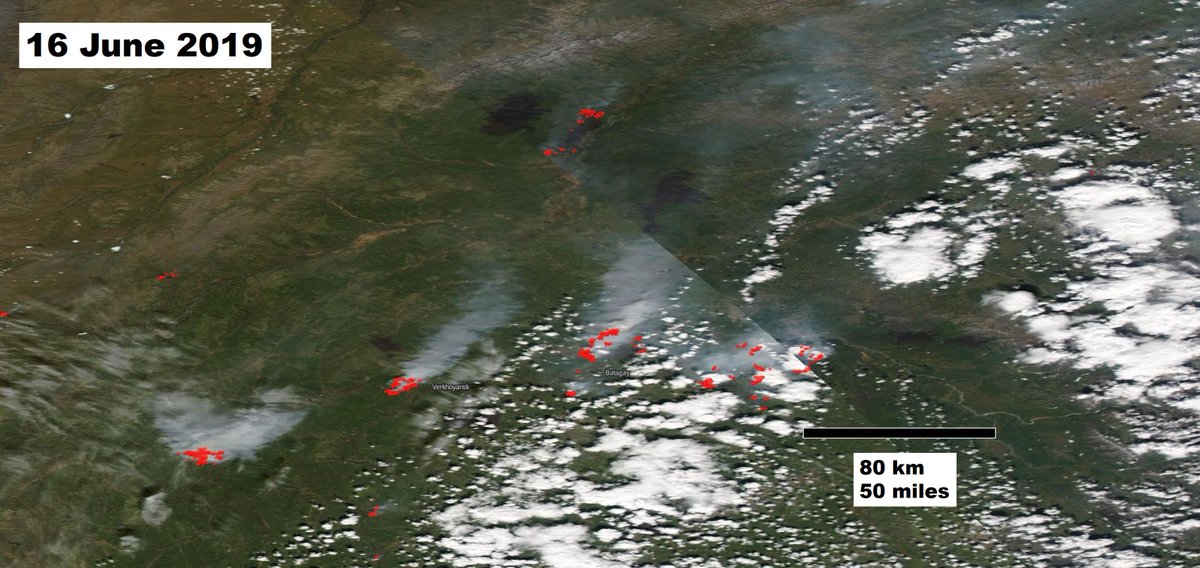[5/9]

Peat shouldn't be available to burn. It only burns when it has been disturbed by some significant environmental change (e.g. drainage/drought). Siberian peatlands should be moist/frozen through summer, but this year's heatwave has dried them out.
[7/9]
[8/9]
- at least some of these fires were ignited by lightning
- ignition made far more likely by heatwave
- fires are burning peat soils
- this is the symptom of a sick Arctic
[9/9]
Try it yourself here:
worldview.earthdata.nasa.gov/?p=geographic&…


















